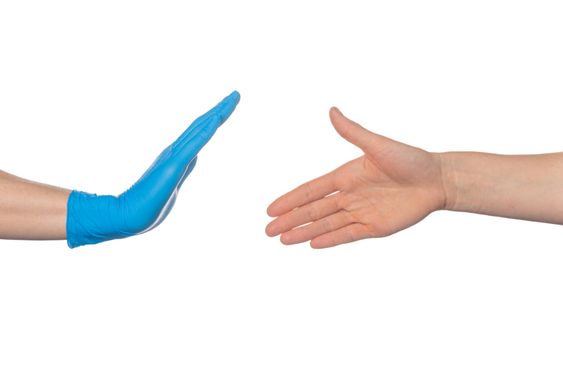How Does Wearing Of Disposable Gloves Affect The Need For Hand Hygiene?

Many healthcare workers wonder why they need to clean their hands when they’re wearing gloves. The short answer is that they need to wash or sanitise their hands before wearing gloves because the gloves used for routine patient care are not put on in a sterile manner.
 Although wearing the appropriate protection level of glove reduces the transfer of micro-organisms to and from the wearers’ hands, much needed protection against blood or other bodily fluids, they are not always an impermeable barrier, and therefore not a substitute for good hand hygiene. They also can provide a dangerous false sense of security in healthcare environments since workers often do not clean their hands as often when wearing gloves.
Although wearing the appropriate protection level of glove reduces the transfer of micro-organisms to and from the wearers’ hands, much needed protection against blood or other bodily fluids, they are not always an impermeable barrier, and therefore not a substitute for good hand hygiene. They also can provide a dangerous false sense of security in healthcare environments since workers often do not clean their hands as often when wearing gloves.
Think about it – busy healthcare workers grab gloves from the box and then hurry to put them on. In this process, they touch the gloves with their hands to put them on. If their hands aren’t clean, any organisms on them will be transferred to the outside of the gloves.
Healthcare staff must also wash or sanitise their hands after wearing gloves because it’s very difficult to remove gloves without contaminating their hands during removal. This transfers organisms from the gloves to the skin. A recent study demonstrated that 52.9% of glove removals resulted in contaminating either skin or clothing.
"Gloves are not a substitute for hand hygiene – they require you to wash your hands more.†- Dr. Chris Hermann, MD, PhD, Founder and CEO, Clean Hands – Safe Hands
The Centers for Disease Control and Prevention (CDC) makes it very clear that wearing gloves does not eliminate the need for proper hand hygiene.
Here is what the World Health Organization says:
- When an indication for hand hygiene precedes a contact that also requires glove usage, hand rubbing, (sanitising) or hand washing should be performed before donning gloves.
- When an indication for hand hygiene follows a contact that has required gloves, hand rubbing (sanitising) or hand washing should occur after removing gloves.
- When an indication for hand hygiene applies while the health-care worker is wearing gloves, then gloves should be removed to perform hand rubbing (sanitising) or handwashing.
Best Practice Glove Hygiene
- Always match the appropriate glove type to the task/procedure to be undertaken.
- Ensure correct selection of the glove size.
- Change gloves frequently.
- Gloves should be disposed of as clinical waste.
- Medical gloves are designated as ‘single use’ and should never be reused under any circumstances (Medical Devices Agency 2000).
- Hands should always be washed and dried thoroughly before donning and after removing any types of gloves (ICNA 1997).
- Gloves should not be worn from one patient to another, in order to protect against cross contamination.
- Disposable gloves should never be re-used.
- Do not use alcohol or wipes on gloved hands as it may risk degrading the strength of the glove
- Not drying hands thoroughly or using barrier creams or moisturisers and lotions is a fairly regular problem in relation to complaints about skin reactions to disposable gloves.
Gloves are intended to protect the provider from the patient, but they do not offer protection for the patient. Performing hand hygiene both before donning and after removing gloves is the best thing you can do to protect both the patient and the provider.
You may be interested in our other articles regarding the correct usage of examination gloves in healthcare environments, Learn how to complete a risk assessment for the appropriate use of examination gloves in care environments here.
 Image source: Dreamstime
Image source: Dreamstime
We hope you've enjoyed the article and find the information insightful. Why not leave a comment or suggestion below!



